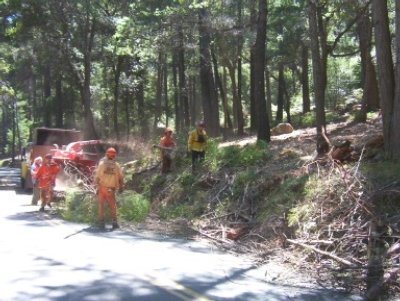- Elizabeth Larson
- Posted On
Light brown apple moth found in Napa County

The light brown apple moth has been found in neighboring Napa County, state and federal officials confirmed Wednesday.
The California Department of Food and Agriculture and the U.S. Department of Agriculture reported that a single adult light brown apple moth was found May 9 in a residential area of Napa.
Officials made the announcement following lab confirmation by Department of Food and Agriculture entomologists, with supporting confirmation by USDA scientists.
“This moth is a threat not only to agriculture but also to our urban environment – our landscaping, our parks and our natural habitat,” state Agriculture Secretary A.G. Kawamura said in a statement. “We are moving quickly to detect the extent of any infestation and contain the problem in the smallest possible area.”
The Department of Food and Agriculture, USDA and the county agricultural commissioner's office have already begun setting and collecting additional traps in the area to determine the extent of the problem. No additional moths have been found in the vicinity to date.
The light brown apple moth, which is native to Australia, was first detected in the Bay Area in February, state officials reported. Since then, it has reached nine counties – Alameda, Contra Costa, San Francisco, Marin, Monterey, Santa Clara, Santa Cruz, San Mateo and now Napa.
More than 2,000 moths have been detected in those nine counties since February, the Department of Food & Agriculture reported, with most of the moths found in Santa Cruz, which officials believe may be an original infestation point.
Trapping is taking place in 40 of the state's 58 counties, but so far Lake hasn't been added to that list. However, trapping is taking place in Mendocino, Sonoma and Yolo.
Officials say the light brown apple moth is of particular concern because it can damage a wide range of plants including many commonly found in our urban and suburban landscaping, public parks and natural environment.
The list of agricultural crops that could be damaged by this pest includes as many as 250 plant species, from grapes and pears to citrus and stone fruits. The pest damages plants and crops by feeding on leaves, new shoots and fruit.
On Tuesday, SB 556, a piece of urgency legislation introduced by North Coast Sen. Patricia Wiggins to address the moth issue, passed the Senate Agriculture Committee. The bill would create an advisory task force to advise Kawamura on the moth issue.
“As we find out more about the spread of this pest, the department and the Legislature will be better able to assess what resources and programs California may need to protect our precious and vulnerable agricultural products from potential harm,” she told the committee at the hearing.
This week, the USDA informed county agricultural commissioners that Mexico has implemented restrictions on shipments of certain fruits and vegetables to that country from the infested counties.
In addition, the USDA reported that seven states – Arizona, Colorado, Florida, Georgia, Nevada, Oregon and Wisconsin – have asked the Department of Food & Agriculture for advance notification of shipments from the quarantined counties.
Late in April state agricultural officials established a quarantine to cover the affected counties, which required inspections and clearances for shipments of plants and fruits from within the affected counties.
On May 2, the USDA added a federal quarantine regulating movement of plant materials between California and other states, with similar inspection requirements as those found in the state quarantine.
USDA and the Department of Food & Agriculture reported that they have assembled a technical working group comprised of international experts on light brown apple moth to discuss survey and mitigation strategies to safeguard against this potentially damaging pest and prevent its further spread.
The group will meet in San Jose today and Friday, May 17-18, to discuss California's situation and make recommendations about the project.
For more information on the light brown apple moth, visit the Department of Food and Agriculture's Web site, www.cdfa.ca.gov.
E-mail Elizabeth Larson at This email address is being protected from spambots. You need JavaScript enabled to view it..
{mos_sb_discuss:2}

 How to resolve AdBlock issue?
How to resolve AdBlock issue? 









